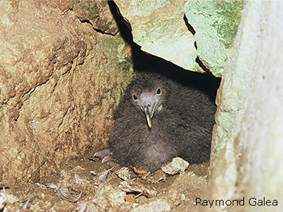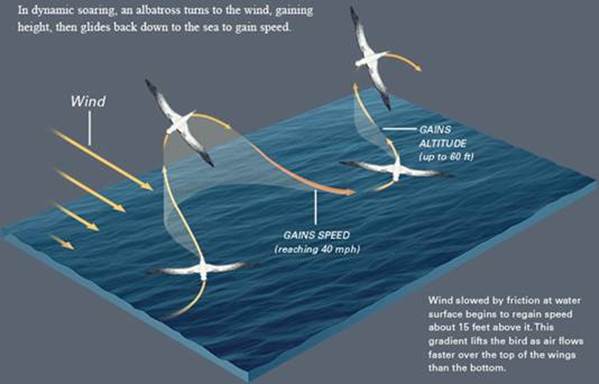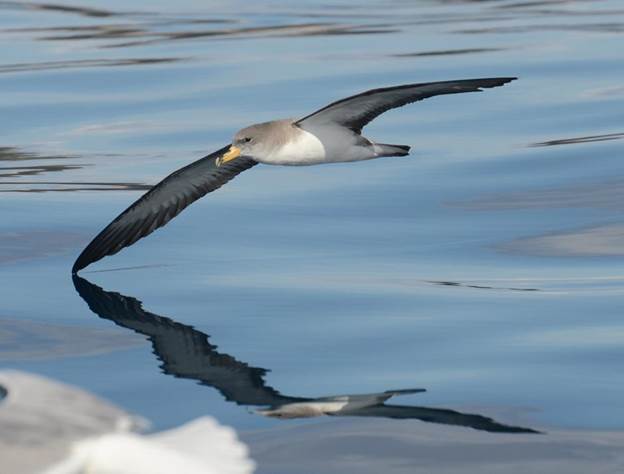This is a large, brown and white seabird that exhibits the gliding flight close to the ocean waves common to shearwaters, albatross, and other pelagic seabirds. The upperparts are a gray-brown with pale feather edges on the back and upper tail. The underparts are a contrasting white. This is a general common color scheme for seabirds that conceals them a bit from predators from above while the white underparts look less conspicuous from beneath when they sit on the water.
These shearwaters have a long snout and a hooked, yellow beak with tubular nostrils that include salt glands. Because they spend most of their life at sea, their body needs to concentrate and expel excess salt. They do this through the salt glands in their tube nostrils. This species is 18-22 inches long with a 44-50 inch wingspan – so can be distinguished by its relatively large size. Cory’s shearwater will feed on fish, mollusks, and offal and they can dive up to 50 feet. It will often be found following fishing boats as they process their catch and the “fish waste” is tossed overboard.
Cory’s shearwater breeds on Mediterranean islands and cliffs, and the Canary, Salvage, Berlengas, and Azore Islands. It is migratory and Mediterranean birds will spend the winter off the coast of South Africa and into the south-west Indian Ocean. Atlantic birds winter off the east coast of North and South America. Calonectris from the ancient Greek kalos – good, and nectris – swimmer.
The species name honors the ornithologist Charles B. Cory (1857 – 1921). Born to a family of wealth he never had to work and developed a strong interest in ornithology early and collected extensively in the Caribbean and the Gulf of Mexico. In 1883 he became one of the 48 ornithologists invited to become founding members of the American Ornithologists’ Union (AOU). He was the first to describe this shearwater species. Interestingly, he also participated in the 1904 Summer Olympics as a golfer.
Cory’s shearwaters mate for life and only come to land to breed. They will find nest sites in burrows or in rock crevices – the nest is a simple collection of pebbles, twigs, and shells. Only one egg is laid that is tended by both sexes. The egg takes about 54 days to hatch and both parents feed the young. Likely to avoid predators, a parent will sit on the egg during the day in the burrow and will not be relieved of duty until after dark. Similarly, once the egg is hatched, the hatchling will be left alone all day just huddled down. Well after dark the parents will come in to feed the young – making their rather strange call as they arrive.

Eventually the young bird is deserted and goes out to sea on its own. The time from hatching to fledging out of the nest is about 90 days.
Shearwaters are very efficient flyers and use dynamic soaring to cover long distances without much wing beating. It is a technique where the bird uses the vertical gradient of the wind and its velocity to travel in a direction perpendicular to the steady wind flow. Albatrosses, shearwaters and other large-winged seabirds use this technique – climbing up against the wind and then skimming the water surface.

I recently saw Cory’s Shearwater off Terceira and Pico Islands in the Azores, flying offshore during the day. And then on the north shore of Pico Island they would come in to feed their young, starting around 10 p.m. – flying near the cliffs and constantly calling out. A very weird sound in the dark.
Here’s a short video clip take about 10:15 p.m. on Pico Island. https://vimeo.com/177581357
